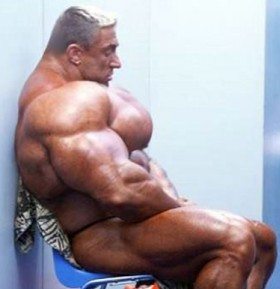I get it. You’re too busy.
Right now, in your athletic department, in your sports medicine department or in your strength and conditioning department there is a million and one things to get done, and they were all due yesterday. Whether it's preparing summer conditioning programs, Christmas break rehabilitation plans or putting the finishing touches on your policy and procedure manual, there’s no time to take on another task, let alone put time aside to develop your skills or trade.
So if you’re too busy, it’s safe to say you won’t be attending a conference this weekend or snuggling up with an anatomy text book tonight in order to better your skills. And if you’re too busy to improve your particular trade or skill then perhaps you’ll also be too busy to notice the young kid two cubicles down accept your dream job at the college across town or maybe you’re too busy to look up and notice your customers, (ya, customers – I know in most athletic departments they’re called athletes or even student-athletes) have stopped buying what you’ve been selling.
So if you’re too busy and can’t find five minutes to breathe, can I suggest finding two minutes and to read and learn from one of the nation’s top thought leaders? Seth Godin isn’t a world renowned surgeon, he’s never taped an ankle and he probably can’t even bench his body weight. But what Seth Godin can do, he does better than anyone else – he’ll stop you dead in your tracks. Seth Godin will make you think… think about everything you do today and everything you’ll do tomorrow. He will not make your athletes run faster or return your athlete from ACL surgery quicker – but he will challenge you to find five more minutes in your day to simply get better.
And if Seth Godin were in athletics? Well, Seth Godin would squat a thousand pounds.
Two of my favorite blog posts from Seth Godin:
The least I could do
One way to think about running a successful business is to figure out what the least you can do is, and do that. That's actually what they spent most of my time at business school teaching me.
No sense putting more on that pizza, sending more staff to that event, answering the phone in fewer rings... what's the point? No sense being kind, looking people in the eye, being open or welcoming or grateful. Doing the least acceptable amount is the way to maximize short term profit.
Of course, there's a different strategy, a crazy alternative that seems to work: do the most you can do instead of the least.
Radically overdeliver.
Turns out that this is a cheap and effective marketing technique.
We can do it
Too often, it seems, this attitude is missing from teams, organizations or the community.
It's missing because people are quick to opt out of the 'we' part. "What do you mean, we?" they ask. It's so easy to not be part of we, so easy to make it someone else's problem, so easy to not to take responsibility as a member of whatever tribe you're part of.
Sometimes it's missing because people disagree about what 'it' is. If you don't know what you're after, it's unlikely you're going to find it.
And it's missing because people confuse cynicism with realism, and are afraid to say "can". They'd rather say 'might' or even 'probably won't'.
Just about everything worth doing is worth doing because it's important and because the odds are against you. If they weren't, then anyone could do it, so don't bother.
Product launches, innovations and initiatives by any organization work better when the key people agree on the goal, believe that they can achieve it and that the plan will work.
Do we have a cynicism shortage? Unlikely.
Successful people rarely confuse a can-do attitude with a smart plan. But they realize that one without the other is unlikely to get you very far.
Count me in. Let's go.
Art Horne is the Coordinator of Care and Strength & Conditioning Coach for the Men’s Basketball Team at Northeastern University, Boston MA. He can be reached at a.horne@neu.edu.
Click here to register for our conference in May!!!!!!






